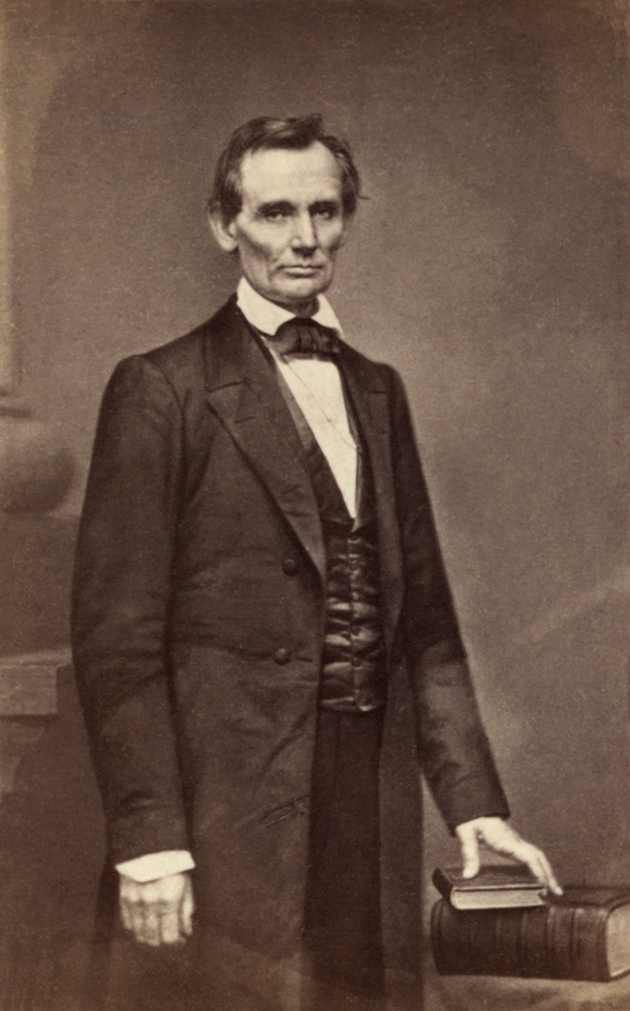AP US History 🇺🇸
454 resourcesSee Units
As the Election of 1860 approached, it became clear that the country was more deeply divided than ever over the issue of slavery in the territories. The four main candidates in 1860 campaigned on different solutions to that issue and the American vote split.
Lincoln-Douglas Debates
Prominent Democratic senator from Illinois, Stephen Douglas, faced a tough reelection battle in 1858 against newcomer and Republican Abraham Lincoln. The nation watched the election closely.
Lincoln was not an abolitionist. As a moderate who was against the expansion of slavery, he spoke effectively of slavery as a moral issue. He argued that the nation had reached the crisis point in the struggle between slavery and freedom stating “A house divided against itself cannot stand,” “the government cannot endure half slave and half free." Southerners heard this and viewed Lincoln as a radical.
There was a series of debates between the two that focused national attention on the Illinois contest. Lincoln continued to go with the theme that Douglas was a covert defender of slavery because he was not a principled opponent to it. Douglas responded in what became known as the Freeport Doctrine, that slavery could not exist in a community if the local citizens did not pass laws (slave codes) maintaining it.
Lincoln lost the U.S. Senate election to Douglas, but won the respect of the Republican circles.
Abraham Lincoln: The Winner

Image Courtesy of Wikimedia
Abraham Lincoln was first a Congressman from Illinois in the 1840s. He gained nationwide fame for his opposition to the Mexican-American War and later his 1858 debates with Stephen Douglas for a US Senate seat for Illinois. While holding ideas that were racist by modern standards, he was known for personally opposing the practice of slavery and politically opposing its spread westward.
Lincoln won the Election of 1860 without any Southern votes and became the first Republican president. He won a majority in the electoral college but only 40% of the popular vote because the country had been split between four main candidates with different views on slavery.
🎥Watch: AP US History - The Election of 1860
Because Lincoln, as a Republican, was determined to stop the spread of slavery out west, the South reacted with horror. They feared Lincoln’s leadership would stop the spread of slavery, embolden abolitionists in the North, and possibly even attack slavery in the Southern states.
The election of 1860 also demonstrated the South’s political weakness because a Northern Republican could win the presidency without a single electoral vote from the South.
In an effort to stop the impending secession of some Southern states, some lawmakers proposed the Crittenden Compromise: constitutional amendments to protect slavery and extend the Missouri Compromise line to California. This was rejected and did not pass.
Secession & Ft. Sumter
Lincoln waited for the South to make the first move, and eventually, in April 1861, the rebels attacked the Federal arsenal at Ft. Sumter in South Carolina, starting the Civil War. Lincoln called for 50,000 volunteers to put down the rebellion, which caused the Upper South (lighter red) to secede because they opposed the use of violence to force fellow Southern states back into the Union.
South Carolina was the first state to secede from the Union in (December 1860). The Deep South (in deep red—>) followed soon after and also before Lincoln was even inaugurated (March 1861).
These cotton-growing states created the Confederacy on the basis of White Supremacy and against the fear that Lincoln would interfere with their slaves either out West or even down South (see the states’ secession declarations).
Browse Study Guides By Unit
🌽Unit 1 – Interactions North America, 1491-1607
🦃Unit 2 – Colonial Society, 1607-1754
🔫Unit 3 – Conflict & American Independence, 1754-1800
🐎Unit 4 – American Expansion, 1800-1848
💣Unit 5 – Civil War & Reconstruction, 1848-1877
🚂Unit 6 – Industrialization & the Gilded Age, 1865-1898
🌎Unit 7 – Conflict in the Early 20th Century, 1890-1945
🥶Unit 8 – The Postwar Period & Cold War, 1945-1980
📲Unit 9 – Entering Into the 21st Century, 1980-Present
🚀Thematic Guides
🧐Multiple Choice Questions (MCQ)
📋Short Answer Questions (SAQ)
📝Long Essay Questions (LEQ)
📑Document Based Questions (DBQ)
📆Big Reviews: Finals & Exam Prep
✍️Exam Skills (MC, SAQ, LEQ, DBQ)

Fiveable
Resources
© 2023 Fiveable Inc. All rights reserved.